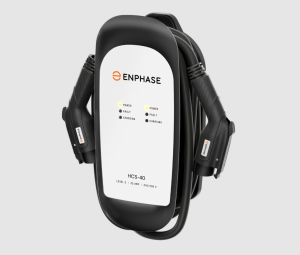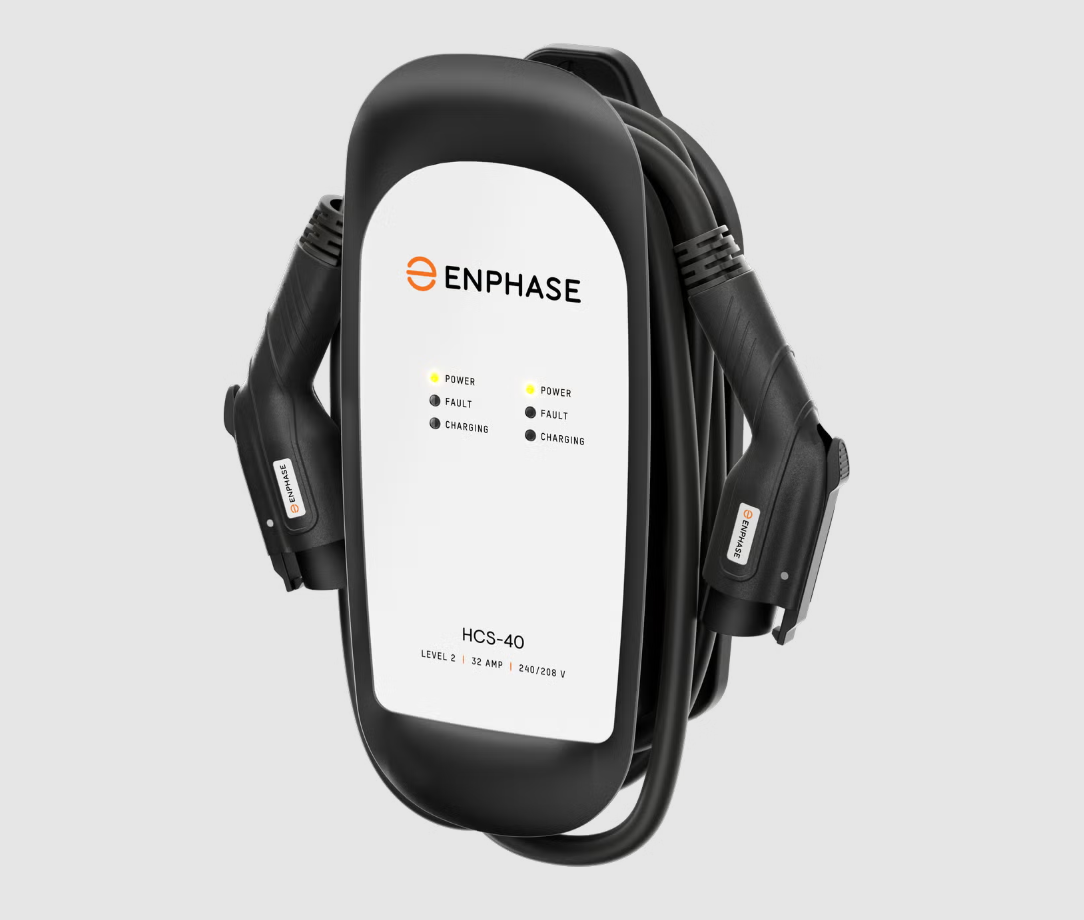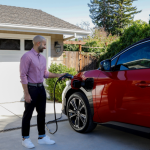As electric vehicles (EVs) gain popularity, more households are owning two or more EVs. This trend has fueled the demand for efficient charging solutions, particularly those capable of charging multiple vehicles simultaneously. Dual EV chargers are Level 2 charging stations designed to charge two electric vehicles at once, offering convenience and efficiency for multi-car households. In this guide, we’ll explore the definition, benefits, types, features, and how to choose and install the right dual EV charger for your needs.

What is a Dual EV Charger?
A dual EV charger is a Level 2 charging device designed to charge two electric vehicles simultaneously. Unlike traditional single-port chargers, dual chargers feature two charging ports, allowing two vehicles to connect and charge at the same time. These chargers typically use a 240V power source, offering significantly faster charging speeds than Level 1 chargers using standard 120V outlets. Depending on the model, dual EV chargers deliver power outputs ranging from 32 amps (A) to 48 amps, with power intelligently distributed between the two vehicles.
Dual chargers are particularly ideal for households with multiple EVs or scenarios requiring rapid charging for two vehicles. For instance, ChargeHub notes that these chargers can significantly reduce charging time, ensuring both vehicles are fully charged by morning.
Benefits of Dual EV Chargers
Dual EV chargers offer several compelling advantages for multi-car households:
-
Convenience: No need to schedule charging times for each vehicle; dual chargers allow both cars to charge simultaneously, often overnight, ensuring both are ready in the morning.
-
Time Savings: By charging two vehicles at once, they eliminate the hassle of multiple charging sessions, ideal for households using both cars daily.
-
Cost Efficiency: While the initial investment is higher than a single-port charger, dual chargers typically require only one dedicated circuit, reducing the need for additional electrical upgrades. For example, EV Adept mentions that a 32-amp dual charger can connect to a 40-amp breaker, adhering to the 80% load rule to prevent overload.
-
Space Optimization: For households with limited parking or charging space, dual chargers maximize efficiency by serving two vehicles with a single device.
-
Environmental Impact: Supporting multiple EVs with efficient charging promotes the shift to sustainable transportation, reducing carbon emissions.
Types of Dual EV Chargers
Dual EV chargers come in various configurations to suit different needs and budgets. Here are the main types:
1. Hardwired vs. Plug-in
-
Hardwired Chargers: Permanently connected to the home’s electrical system, offering stable power delivery and ideal for long-term use, but requiring professional installation.
-
Plug-in Chargers: Connect to a standard 240V outlet (e.g., NEMA 14-50), offering easier installation and portability, suitable for temporary or flexible charging needs, though power output may be slightly lower.
2. Amperage Ratings
-
32A Chargers: Deliver up to 7.68 kilowatts (kW) of power, suitable for most EVs, with power split between the two vehicles.
-
40A Chargers: Provide up to 9.6 kW, offering faster charging speeds, ideal for households with higher charging demands.
-
48A Chargers: The highest capacity option, delivering up to 11.52 kW, suitable for high-performance EVs or rapid charging needs.
Key Features to Consider When Choosing a Dual EV Charger
When selecting a dual EV charger, the following features are critical:
-
Power Output: Ensure the charger’s amperage and kilowatt output meet your EVs’ requirements. For example, a 40A charger delivers 9.6 kW, suitable for most EVs.
-
Cable Length: Opt for a model with sufficiently long cables (e.g., 25 feet) to comfortably reach both parking spaces.
-
Weatherproofing: For outdoor installations, choose a charger with a high NEMA rating (e.g., NEMA 4) to withstand rain, snow, and other weather conditions.
-
Smart Features: Some chargers offer Wi-Fi connectivity, enabling monitoring of charging status, scheduling charging times, or integration with smart home systems via mobile apps.
-
Safety Certifications: Select chargers certified by UL or ETL to ensure compliance with rigorous safety standards.
-
Compatibility: Most dual chargers use the standard J1772 connector, compatible with all North American EVs. Tesla owners will need a dedicated adapter.
Installation Considerations
Installing a dual EV charger requires careful planning to ensure safety and efficiency:
-
Electrical Requirements: Dual chargers typically require a dedicated 240V circuit with a 40A or 50A capacity, depending on the model. A licensed electrician should assess your home’s electrical system to determine if upgrades are needed.
-
Professional Installation: Hardwired chargers must be installed by a certified electrician to comply with local building codes. Plug-in models may be installed by homeowners, provided the outlet is compatible.
-
Permits and Incentives: Some regions require installation permits. Many countries and regions offer rebates or tax incentives for EV charger installations. For example, ChargeHub provides information on incentives in Canada.
-
Location: Install the charger near the power source, ensuring the cables can safely reach both vehicles’ charging ports.
Top Dual EV Charger Models
Below are some popular dual EV charger models available on the market for your consideration:
|
Model |
Power |
Type |
Key Features |
|
|---|---|---|---|---|
|
Enphase HCS-D40 |
32A (7.68 kW) |
Hardwired |
25-ft cables, NEMA 4 weatherproof, 5-year warranty |
|
|
Grizzl-E Duo |
40A (9.6 kW) |
Plug-in/Hardwired |
Dynamic power sharing, Canadian-made, weatherproof |
|
|
JSOWELL |
32A/port (7.2 kW/port) |
Hardwired |
ENERGY STAR certified, app integration, dual-port |
|
|
Leviton EV48S-DP |
48A/port (11.52 kW) |
Hardwired |
AmpUp management software, LCD screen, OCCP 2.0 compliant |
|
1. Enphase Level 2 Dual EV Charger (HCS-D40)
-
Power: 32A, totaling 7.68 kW.
-
Type: Hardwired.
-
Features: 25-foot cables, suitable for indoor/outdoor use (NEMA 4), 5-year warranty, ETL and UL certified.
-
Best for: Households seeking a reliable, durable charging solution.
2. Grizzl-E Duo
-
Power: 40A, totaling 9.6 kW.
-
Type: Supports NEMA 14-50 plug-in or hardwired.
-
Features: Dynamic power sharing, Canadian-made, rugged and weatherproof.
-
Best for: Households needing flexible installation options on a budget.
3.JSOWELL Level 2 Dual EV Charger
-
Power: 32A per port, 7.2 kW per port.
-
Type: Hardwired.
-
Features: ENERGY STAR certified, supports ChargePoint app, suitable for commercial and residential use.
-
Best for: Tech-savvy users wanting app-based charging management.
4. Leviton EV48S-DP
-
Power: 48A per port, totaling 11.52 kW.
-
Type: Hardwired.
-
Features: AmpUp management software, LCD screen, OCCP 2.0 compliant, ideal for advanced users.
-
Best for: Households needing high power output and advanced management features.
Frequently Asked Questions
1. Can a dual EV charger charge just one vehicle?
Yes, when only one vehicle is connected, the charger allocates full power to that vehicle, providing the fastest possible charging speed.
2. How will a dual EV charger affect my electricity bill?
The impact on your electricity bill depends on usage frequency and local electricity rates. Charging during off-peak hours can reduce costs. Some utility companies offer special EV charging rate plans.
3. Is a dual EV charger worth the investment?
For households with two or more EVs, a dual charger is a worthwhile investment, offering convenience, time savings, and ensuring both vehicles are always ready.
4. Are there government incentives for installing EV chargers?
Many regions offer rebates or tax incentives for EV charger installations. Check local policies or refer to ChargeHub for details.
5. How do dual chargers allocate power?
When two vehicles charge simultaneously, the charger splits power evenly. For example, a 40A charger provides 20A to each vehicle. If only one vehicle is charging, it receives the full 40A.
Future Trends and Environmental Impact
As the EV market continues to grow, dual EV chargers are likely to integrate further with smart grid technologies. For instance, future chargers may communicate with the grid to optimize charging times based on electricity demand and renewable energy availability. This can lower electricity costs and reduce reliance on fossil fuels.
Moreover, dual chargers promote the adoption of multiple EVs, accelerating the transition to low-carbon transportation. According to EV Adept, the efficient power allocation of dual chargers maximizes the utility of home charging infrastructure, reducing dependence on public charging stations.
Conclusion
Dual EV chargers are the ideal solution for multi-car households, offering unmatched convenience, time savings, and resource efficiency. By understanding the types, features, and installation requirements, you can select the charger that best fits your needs. As the EV market evolves, investing in a reliable dual charger ensures you’re prepared for the future of sustainable transportation. Whether you choose Enphase, Grizzl-E, or ChargePoint, the right dual charger will make your EV lifestyle seamless.


